While no content marketing tool can replace a solid strategy and talented humans, having the right tech stack can certainly help you get the job done better, easier, and more efficiently.
There are hundreds of content marketing tools available – some free or cheap – and some very expensive. They also serve tons of different purposes, from content ideation to production to promotion, optimization, and more. The content marketing technology landscape is growing every year.
This is exciting, since it means that if you have a problem, you can probably find a software solution to help you solve it. But it’s also overwhelming. How do you know which of the couple of hundred tools are worth trying?
This post will help clarify those decisions for you. We’ll outline the top content marketing tools available now.
The Best Content Marketing Tools
- HubSpot
- WordPress
- Google Docs
- Planable
- Infinity
- Airstory
- Grammarly
- Yoast
- Buzzsumo
- Ahrefs
- Brafton
- Vidyard
- Loom
- Movavi
- Trello
- Airtable
- Google Analytics
- HotJar
- Google Optimize
- Mutiny
- The Stocks.IM
- Canva
- Adobe Photoshop
- SquidVision
1. Marketing Hub
 Best for: Consolidating multiple content marketing tools into one centralized location.
Best for: Consolidating multiple content marketing tools into one centralized location.
What we like: HubSpot’s array of tools and systems grow along with your business, allowing you to scale seamlessly.
HubSpot offers many content marketing tools, and many of them are free to try. These include:
In addition to free content marketing tools, if you really want to build a growth machine, HubSpot has a world-class CMS and the most powerful marketing automation platform in the industry and allows you to centralize everything within a free CRM. This means that, at each and every level of a company’s growth, HubSpot has a solution that can help you build your content marketing program.
HubSpot also makes products for sales and service teams. As such, it can really be the ground control for your whole business.
2. WordPress
 Best for: Blogging, publishing editorial content, and creating portfolios.
Best for: Blogging, publishing editorial content, and creating portfolios.
What we like: The customizable templates are easy to use, allowing users to build a website quickly. Plus, it integrates with multiple plug-ins to take your work to the next level.
WordPress is the most widely used CMS in the world. Search Engine Journal reports that WordPress powers about 39.5% of all sites on the web.
Social proof can sometimes lead us astray, but in this case, it turns out that WordPress is a pretty powerful tool, both at the beginning stages and as you grow your content marketing program (and it’s used by sites like The New Yorker and The Next Web).
At its core, WordPress is an open-source CMS that allows you to host and build websites. You can self-host or host your site via WordPress.com. WordPress contains plugin architecture and a template system so you can customize any website to fit your business, blog, portfolio, or online store.
It’s a highly customizable platform and is widely used by bloggers.
3. Google Docs
Best for: Editing and collaborating with content writers.
Why we like it: It’s free, widely used, and simple to get started. If you can use word processor applications, Google Docs is a must-have.
Google Docs is to content marketing what a kitchen is to chefs: it’s where all of the work gets done before the final presentation.
Personally, I don’t know any content marketers who don’t use Google Docs to draft their articles. It’s the best platform for collaboration by a long shot, but it’s also easy to use and has a pleasant user experience.
You can easily share documents with your team with just a few clicks. Additionally, you can give editing access to specific people and view their comments by using the “suggestions” and “comments” features.
In addition, you can usually find a way to upload Google Docs directly to your CMS. In the case of HubSpot, you can do that by default. If you use WordPress, you can use a tool like Wordable to help you out.
Google Docs is free, quite ubiquitous, and pleasant to use. Not many reasons not to use it.
4. Planable

Best for: Internal and external content planning and collaboration
Why we like it: Planable helps streamline planning, creating, reviewing, and collaborating on content across multiple channels: social media, blogs, newsletters, etc for both internal teams and agency client work.
Planable’s Universal Content is a bundle of features that help marketing teams create top-notch content of any form without having the continuous back and forth between your teams. You can create visual content calendars and content planning in real-time. Every project can add tailored approval workflows which are a huge time saver for working with clients and external teams. Each member can be assigned custom roles and permissions that allow checks and balances as well.
5. Airstory
 Best for: Writing academic papers and collecting research.
Best for: Writing academic papers and collecting research.
Why we like it: Put writer’s block to a halt with Airstory. This app easily organizes and exports your notes, ideas, and research all in one spot.
If you do want to step up your writing and collaboration game, Airstory is a more powerful platform for writers. If you find yourself moving too often between Evernote, Google Docs, Google Drive, and you always seem to have a hundred tabs open for research, it might be time to look into Airstory.
It helps you save quotes, images, and multimedia and drag and drop it into any writing application. As such, it’s an incredible tool for collaboration, but also for writers w
6. Infinity

Best for: Organizing and collaborating on content management projects.
Why we like it: The Infinity platform is designed to foster team collaboration, with flexibility and scalability at its core. You have the freedom to structure it in a way that suits your specific needs and keep your team on track with all content marketing tasks.
You can easily create tasks, assign them to your team, and manage deadlines with just a few clicks. Plus, there are 7 ways to view your content plan in a way that suits you best — be it on a Kanban board, a calendar, or a simple list.
You have the ability to add comments directly to tasks and view the entire discussion related to each piece of content. Additionally, there are automations available that can be quite useful if you wish to automate manual tasks or set reminders for important content.
The software also supports integrations with various other tools to provide a more seamless workflow, whether you’re using Google Calendar for your posts or a CMS for publishing. Add to the mix over 50 templates to help you get started, and you’ve got an all-encompassing tool that makes working a breeze.
7. Grammarly
 Best for: Editing and proofreading content pieces before publication.
Best for: Editing and proofreading content pieces before publication.
Why we like it: Grammarly works across multiple communication mediums, from email to documents to social media.
Grammarly has changed the game for me. I’m not naturally what you would call “detail-oriented,” so if it weren’t for talented editors, you’d be tearing me apart right now for the multitude of grammar mistakes littering my articles.
Grammarly, however, reduces my error rate by probably 50-80%. I still have some mistakes slip through, but to a large extent, Grammarly saves me from embarrassment (not just when writing articles, by the way — it also works for social media and forum comments).
Their browser extension works with Chrome, Safari, and Firefox, and offers a basic grammar and punctuation plan for free.
8. Yoast
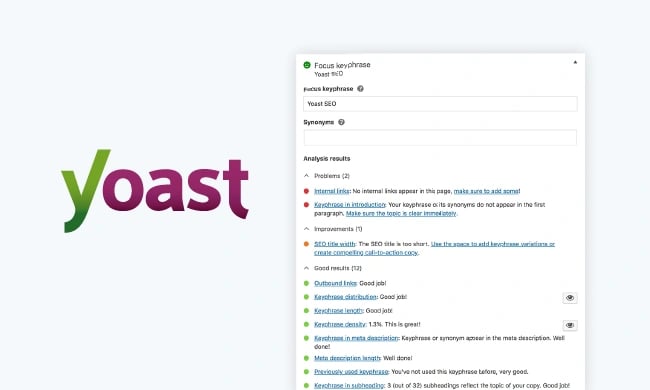 Best for: Writing for search engine optimization (SEO).
Best for: Writing for search engine optimization (SEO).
Why we like it: Yoast is easy to use and one of the best SEO WordPress plugins available.
Yoast is one of my favorite tools for writing SEO-focused content.
It’s a sort of “all-in-one” WordPress plugin for SEO that helps do pretty much everything, including optimizing content for a keyword, previewing and editing meta-descriptions and URL slugs, abstracting away technical SEO tasks, and suggesting relevant internal links. The simple red, yellow, and green indicators make it easy to figure out if you’ve optimized your page correctly, or what could use more work.
They have over 9,000,000 downloads, 4.9 out of 5 stars in the WordPress marketplace, and just anecdotally, everyone I know who uses WordPress uses Yoast. It’s just a great plugin.
9. Buzzsumo
 Best for: Carrying out content research and tracking performance metrics.
Best for: Carrying out content research and tracking performance metrics.
Why we like it: Buzzsumo takes the guesswork out of influencer marketing and content curation, a bonus for those short on time.
Buzzsumo is a great multi-purpose content marketing research tool.
One of the main things it can do is help you analyze what content performs best for any topic or competitor. You can see metrics like social shares, backlinks, and which influencers are sharing a given piece of content.
For content strategy needs, Buzzsumo can also be used to find what topics are trending across various platforms and the kinds of headlines that are receiving the most traction with engagement.
They also have great influencer reports so you can see who the thought leaders are for a given topic area.
10. Ahrefs

Best for: Completing keyword research.
Why we like it: Ahrefs can be used for basic SEO research, but also handle more in-depth projects like performance reports. These reports can be set to the cadence of your choice so you’re always in the loop.
Ahrefs is my personal favorite SEO tool, and I use it just about every day. It’s great for everything from tracking the rankings of your keywords to analyzing your competitors’ keywords and traffic and much more.
Every time I think I’ve mastered the full functionality of Ahrefs, I find a new feature that surprises and delights me. The basics, such as keyword research or site analyzer, are wonderful. But I also love reports like “top pages” (where you can analyze the most valuable pages on a website), or “content gap” (where you can see what competitors rank for that you don’t).
11. Brafton
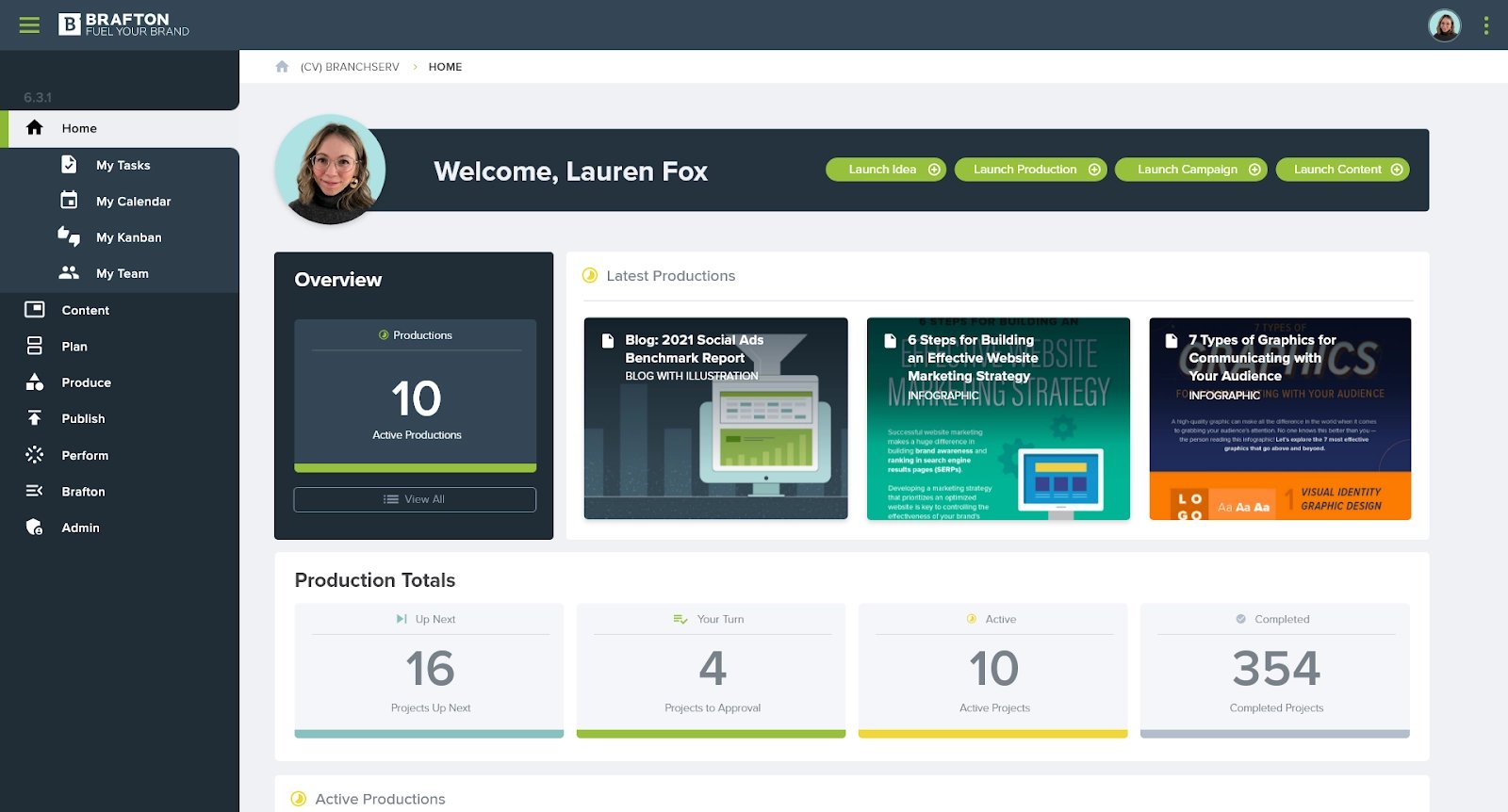
Best for: End-to-end management of content marketing workflows.
Why we like it: Brafton is a rare, full-end content marketing platform that helps you manage everything from ideation to reporting.
Brafton provides a unique content marketing platform with plug-and-play project management tools to help you manage the entire content marketing life cycle, ideation, publication, reporting, and more.
With easy-to-use tools, you can start using Brafton on day one without any setups or configurations. Since you can focus on the entire content marketing funnel, you have access to various tools you need from in-app messaging, content calendars, campaign and project set-up, content libraries, content scheduling and more.
Once you launch a new project, Brafton also provides in-depth analytics and team performance KPIs that you can integrate with popular tools like Google Analytics, Search Console, SEMrush, and more.
12. Vidyard

Best for: Creating B2B marketing videos, digital marketing, and content creation.
Why we like it: Vidyard’s analytics and personalization features not only help businesses understand how their content is performing, but also demonstrates how to leverage it to boost engagement.
Vidyard is a video marketing platform that helps you host, share, and promote video content on your website.
They have a sales solution as well to help you close more accounts, but the marketing solution is what I’m most used to. Vidyard’s video analytics are robust.You can run A/B tests and personalize videos, and you can even gate videos at a certain time length to help capture leads.
Additionally, they’ll easily optimize your videos for SEO and integrate with various CRM, email, and social platforms.
13. Loom

Best for: Creating video presentations and tutorials.
Why we like it: Loom is versatile and user-friendly. Utilize it to easily answer questions or explain complex topics that require a visual aid.
Loom is a tool that I’ve more recently begun using, but at this point it’s a staple for me.
It’s a simple tool, but one with powerful use cases, even beyond content marketing. What it does is allow you to create, edit, record your screen, and share videos. For content marketing, I love this, because I can create and embed tutorials for technical walkthroughs.
Organizationally, I love it as well. It’s great for communicating quick questions or explaining concepts to other team members (without requiring a full, synchronous meeting).
14. Movavi
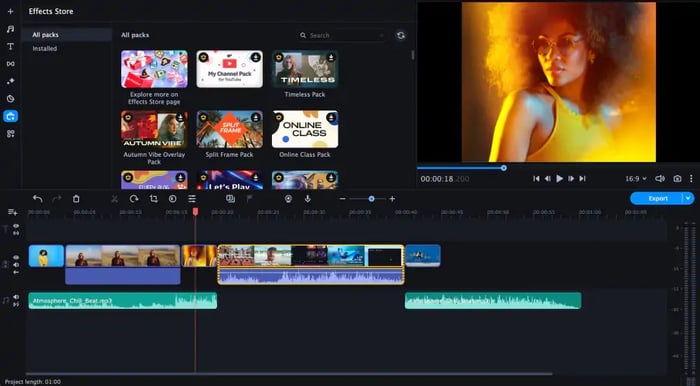
Best for: Budget-friendly video editors for beginners
Why we like it: I personally find Movavi Video Editor to be a great option for beginner video editors who want to create professional-looking videos without prior experience. The intuitive interface and pre-made templates make it incredibly easy to produce high-quality videos in a short amount of time and without breaking the bank.
I especially appreciate that Movavi Video Editor offers both video and photo editing tools, allowing me to work with different types of media in one program, which ultimately saves me time and streamlines my workflow. Additionally, the pre-made templates give my videos a polished and professional look, even if I don’t have any design skills.
Beyond its basic features, Movavi Video Editor also has some impressive add-ons, such as AI background removal, AI motion tracking, and 8x AI upscaling. These tools take your videos to the next level and provide an extra level of polish to your content, regardless of your level of expertise in video editing.
15. Trello
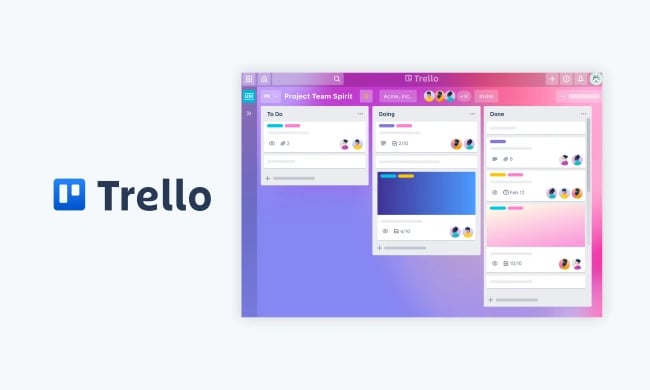
Best for: Keeping track of tasks and project management.
Why we like it: Trello puts all of your team’s projects in one place and is customizable enough to grow with your changing needs.
When you really start producing content, you’ll need some way to manage the process. This is particularly true if you’re working with many staff writers or guest writers.
My favorite tool for this is Trello.
Trello is a simple kanban and project management tool, which means it can be used for many purposes. In fact, I’ve used it for tons of things, like growth experiments, sales pipelines, and product feature roadmaps.
16. Airtable
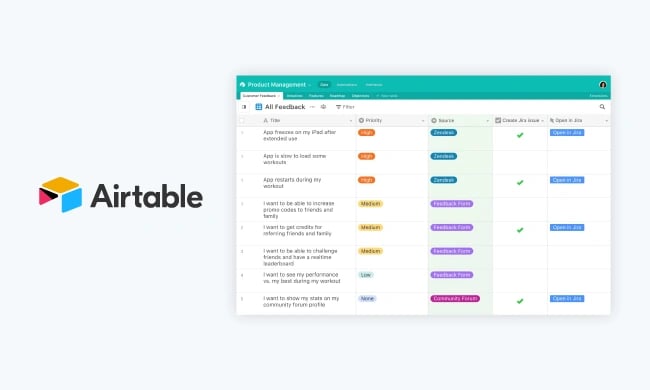 Best for: Managing tasks and databases.
Best for: Managing tasks and databases.
Why we like it: Airtable is great for storing lots of data (hello, spreadsheets) in one place and using customized filters to sort it.
Airtable is another project management tool, though it’s a little more complicated (though also customizable). It’s kind of like a mixture between spreadsheets and Trello. Again, with Airtable, the use cases are many, but I really like it for two content marketing purposes:
- Editorial calendars
- Influencer/writer management
- Marketing campaign tracking
I’ve also used Airtable for several other things in the past, including growth experiments and general team operating documents.
17. Google Analytics

Best for: Understanding your audience and tracking site metrics.
Why we like it: Google Analytics is ubiquitous, free, and easy to use. Use it to see how people found your site and observe visitor behavior.
When talking about content marketing tools, you can’t leave measurement out of the discussion.
Sure, you can get some good insights from SEO tools like Google Search Console as well as previously listed tools like Ahrefs. But you’ll also want a digital analytics platform so you can track business metrics.
Google Analytics is one of the most widely used platforms online. It’s easy-to-use (at least the basic configurations), and it’s free. Two big benefits.
However, it’s also very powerful if you’re technical and know how to set up a proper configuration. Not only can you track goals, like form submissions or product purchases, but you can also set up behavioral events, like scroll-depth.
Best of all, you don’t have to do much to get access to all of this data. Simply set up your Google Analytics account, copy the code provided to your website, and you’re good to go. Google Analytics will automatically start tracking the data from your website.
18. Hotjar
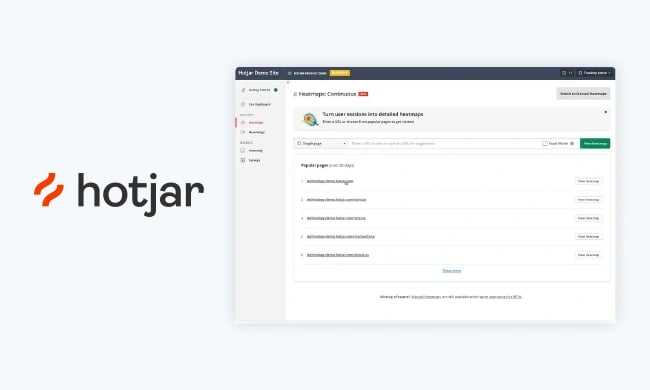
Best for: Understanding visitor behavior on your website.
Why we like it: Hotjar’s tools allow business owners to get an accurate read on how visitors experience their site. It’s great for marketers, designers, and researchers.
Hotjar is my favorite user experience analytics tool. It’s got some qualitative tools, such as on-site poll, surveys, and session replays. Where Google Analytics can help you uncover the “what” and “where” of user behavior, Hotjar’s tools can help you start to tiptoe into the “why.”
In addition, they also provide some quantitative tools such as heat maps. These allow you to get a good visual picture of where your visitors are clicking and scrolling.
One use case I love HotJar (outside of CRO) for is to source interesting content ideas:
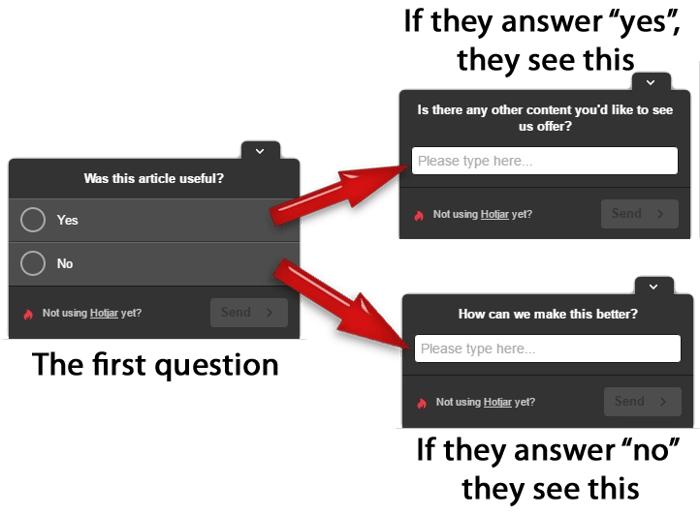
In the example above, follow-up questions are asked based on what users answered to a previous question. Their responses can then be used to inform your content going forward.
19. Google Optimize
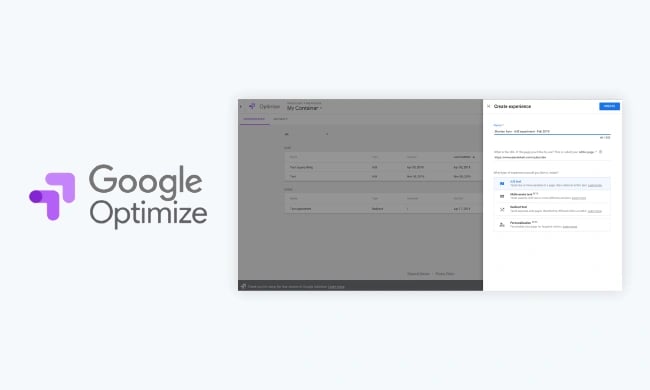
Best for: A/B testing changes to your site’s pages.
Why we like it: Google Optimize harnesses the power of their analytics and statistical tools to help businesses find what your site visitors engage with most and hone in on areas that need improvement. Statistical modeling tools simulate real-world performance for any tests you’d like to perform.
We’ve got a quantitative digital analytics tool (Google Analytics) and a qualitative insights platform (Hotjar), so we presumably can know a lot about our readers and our website at this point. But what if we want to make a change to our blog or landing pages?
My background is in optimization, so if there’s sufficient traffic, I like to set up A/B tests for site changes.
There are many tools out there for this, but I wanted to list Google Optimize because it’s free. It’s also a good starter option to get used to. If you do want to explore other options, here’s a good article comparing the market solutions. But Google Optimize is a great start.
20. Mutiny
 Best for: Personalizing B2B websites.
Best for: Personalizing B2B websites.
Why we like it: Mutiny leverages smart, AI-driven technology to help guide content recommendations. Its website personalization features allow users to quickly change their website and see results in real time.
A/B testing is one thing; personalization is also an interesting avenue to explore.
Where A/B testing is a controlled experiment with a limited time-horizon, personalization allows you to deliver different unique experiences to subsets of your overall audience.
For example, you could target mobile users with different popup forms. Or you could target visitors who have read three blog posts with an offer for a specific ebook. Additionally, you could target people who scroll 75% of the way down a certain blog post with an in-text CTA.
The options are endless, only limited by your time, resources, creativity, and prioritization.
Anyway, Mutiny is my favorite platform in this space. It’s designed for B2B, so if you’re in ecommerce, you may want to look at another tool like Content Hub . But Mutiny is a good and promising newer player with lots of functionality.
21. TheStocks.IM

Best for: Sourcing stock images and free photos.
Why we like it: TheStocks.IM aggregates multiple free photo sites into one place, saving you time.
Most good content marketing includes imagery, so it only makes sense to include a stock photo site here in our list of content marketing tools.
I like TheStocks.IM because it aggregates several free stock photo sites, including Unsplash (my favorite) and Pixabay. Just type in the topic or object you’re searching for into the search box, and it will pull up images across all the platforms it sources from.
22. Canva
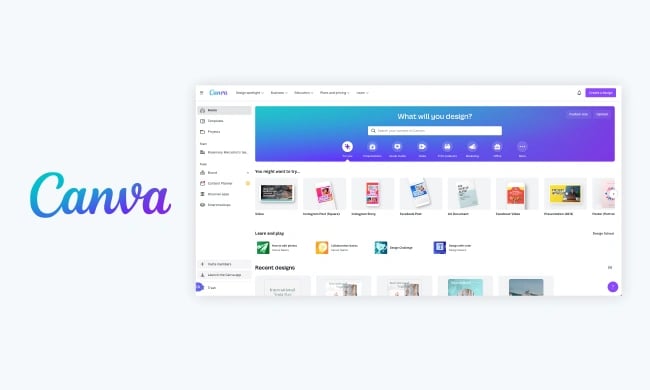
Best for: Designing your own marketing materials.
Why we like it: Canva’s intuitive UI allows design novices to easily create infographics and other materials suitable for print materials, social media posts, and blogging platforms.
What about when a stock image doesn’t cut it, and you want to make your own imagery?
Canva is a great option here.
With Canva, you really don’t need to have excellent graphic design skills. I’m a horrible designer, and I can make decent looking graphics with Canva. It’s really designed for the layperson.
This tool is great for all kinds of content marketing imagery, like social media images, blog cover photos, Twitter cover photos, etc. It’s pretty all-purpose.
Start with one of their templates or create a new design from scratch. If you can drag and drop, you can create materials using Canva.
23. Adobe Photoshop
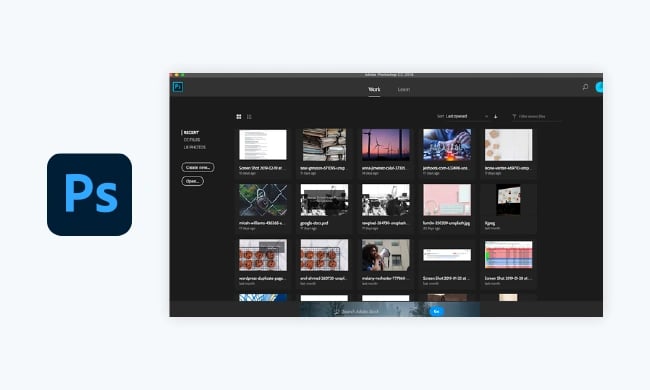
Best for: Editing photographs and images, and designing custom materials.
Why we like it: The uses for Photoshop are endless. Mastering this design tool will make your materials look professional and give you more autonomy over the kinds of designs you can use.
Now, what if you want to make your own imagery, but you actually are good at graphic design?
Well, in this case, Photoshop is the gold standard. It’s great for editing photographs as well as creating images such as Facebook photos, blog cover photos, and even screenshot tutorials.
I find that a little bit of skill with Photoshop goes a long way. Mastering Photoshop will allow businesses and marketing teams to create custom designs and materials to suit their needs instead of being tied to a particular template or layout.
24. SquidVision
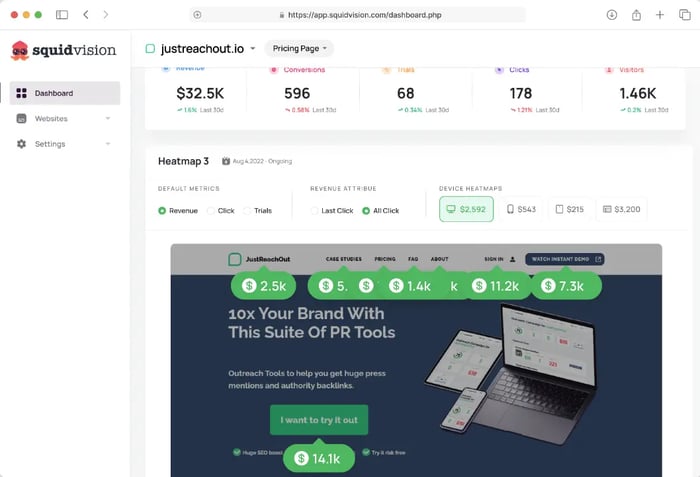
Best for: Auditing your content marketing to see how much revenue each blog post generates.
Why we like it: Squidvision is great to content marketing and optimizing the ROI on your content. If you’re curious on how much revenue their SEO efforts are driving, SquidVision is perfect solution.
Why we like it: SquidVision works like a heatmap tool, generating snapshots of your blog posts and tracking clicks and revenue from any blog post or page. There are plenty of heatmap tools out there, however, what makes SquidVision so special is that it tracks and attributes revenue to each page, button, and link. This means you can literally see how much revenue every blog post has generated, and even better you can see which Calls To Action in the blog post are generating revenue. Then you can optimize the CTA’s that aren’t getting the job done.
You can hover over any revenue bubble on a heatmap and it will generate a bigger revenue bubble with a breakdown of clicks, trial sign-ups and revenue for that button or link.
Content Marketing Tools Won’t Save a Bad Content Strategy
… but they’ll certainly help you get the job done faster and more effectively.
Although there are many more content marketing tools out there, this list sums up the best tools for most marketing needs. Try them out and watch them enhance your content creation strategy and execution.
This article was originally published March 4, 2019 and has been updated for comprehensiveness.

![Download Now: 150+ Content Creation Templates [Free Kit]](https://no-cache.hubspot.com/cta/default/53/5478fa12-4cc3-4140-ba96-bc103eeb873e.png)
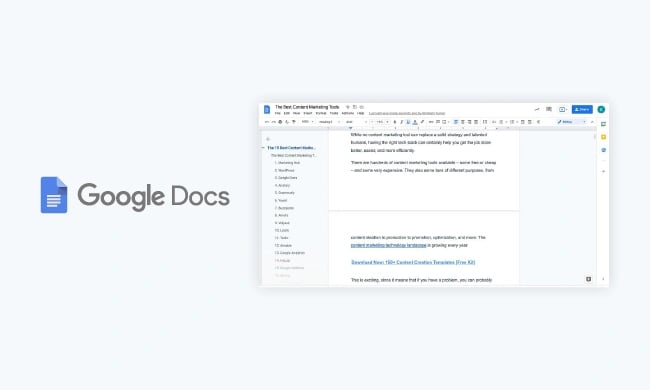



![How to Optimize for Google’s Featured Snippets [Updated for 2024]](https://moz.com/images/blog/Blog-OG-images/How-to-Optimize-for-Googles-Featured-Snippets-OG-Image.png?w=1200&h=630&q=82&auto=format&fit=crop&dm=1724004002&s=13df73104762982790dab6dc8328023f)


